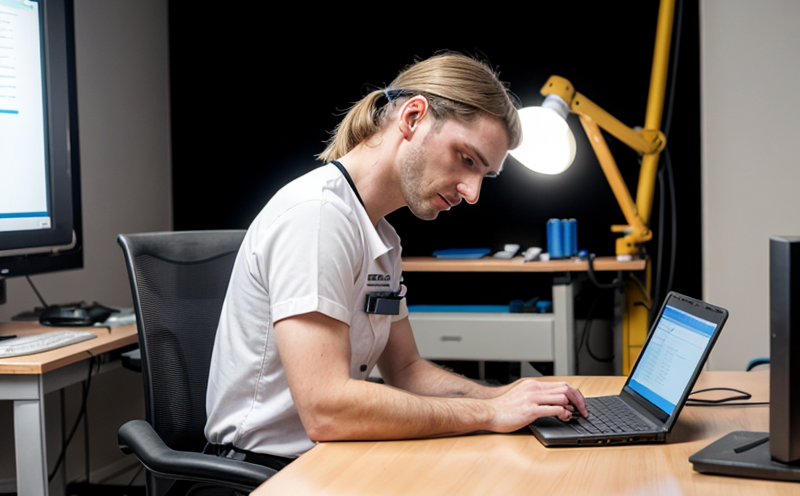SAE AS 8049 Crew and Passenger Seat Ergonomic Testing
The SAE AS 8049 standard is a critical component of human factors and ergonomics testing in the aerospace and aviation industry. This service focuses on ensuring that crew and passenger seats are designed with safety, comfort, and efficiency in mind. By adhering to this standard, manufacturers can ensure their products meet regulatory requirements and provide optimal performance for end-users.
The SAE AS 8049 standard is particularly important given the high stakes involved in aerospace operations. Crew members require seating that allows them to perform tasks effectively under various conditions, while passengers need seats that are comfortable and conducive to safety during flights. This service ensures these requirements are met through rigorous testing procedures.
The process begins with thorough specimen preparation, which involves selecting samples of the seat design for evaluation. Once prepared, the specimens undergo a series of tests aimed at assessing their ergonomics. These tests may include anthropometric measurements, pressure distribution analysis, and dynamic loading experiments to determine how well the seats fit the human body.
Instrumentation plays a crucial role in this testing process. Sophisticated tools are used to measure various parameters such as seat depth, backrest angle, armrest position, and lumbar support. Additionally, motion capture systems can be utilized to observe how occupants interact with the seating arrangement over time. This data is then analyzed using advanced software programs that generate detailed reports on each specimen’s performance.
The results of these tests are vital for both manufacturers and regulators alike. They provide objective evidence regarding whether or not a given design complies with SAE AS 8049 standards. Compliance ensures that all aspects of the seat – from its physical structure to its interaction with human physiology – meet industry benchmarks.
By offering this service, we help our clients stay ahead of regulatory changes and competitive pressures by ensuring their products consistently exceed expectations. Our team leverages years of experience in aerospace engineering combined with cutting-edge technologies to deliver accurate, reliable results that stand up to scrutiny from any source.
Applied Standards
| Standard Name | Description |
|---|---|
| SAE AS 8049 | This standard covers the ergonomic design requirements for crew and passenger seats in aircraft. |
| ISO 16253-1 | This international standard provides guidance on human factors engineering and ergonomics principles applicable to all products and systems intended for use by humans. |
The SAE AS 8049 standard sets specific criteria that must be met for crew and passenger seats in aircraft. It includes requirements related to seat dimensions, backrest angles, armrest positions, lumbar support, and other factors affecting comfort and safety. Compliance with this standard ensures that the seating design is optimized for human use.
Additionally, ISO 16253-1 provides broader guidance on how to apply ergonomic principles across all product designs. This international standard emphasizes understanding user needs, considering cultural differences in ergonomics practices, and incorporating feedback from users throughout the development process. By following these guidelines, manufacturers can create more effective and enjoyable experiences for their customers.
Scope and Methodology
| Test Parameter | Description |
|---|---|
| Anthropometric Measurements | Determining the dimensions of human bodies to ensure proper fit. |
| Pressure Distribution Analysis | Evaluating how forces are distributed across seat surfaces during use. |
| Dynamic Loading Experiments | Assessing the stability and durability of seats under varying loads and movements. |
The scope of SAE AS 8049 ergonomics testing encompasses several key areas. First, anthropometric measurements are conducted to ensure that the seat dimensions accommodate a wide range of users comfortably. This includes considering height, weight, body shape variations among different ethnic groups, and other relevant factors.
Pressure distribution analysis aims at identifying whether there are any pressure points on the seat surface that could cause discomfort or injury over extended periods. This test helps manufacturers identify potential hotspots where additional padding might be needed to improve user comfort.
Dynamically loading experiments involve subjecting the seats to simulated flight conditions, including takeoff, landing, turbulence, and various acceleration/deceleration phases. These tests help assess how well the seat can withstand stresses without compromising its structural integrity or affecting occupant safety.
Competitive Advantage and Market Impact
- Pioneering approach to ergonomic design that enhances user satisfaction and reduces risks associated with poor seating arrangements.
- Ensures compliance with stringent regulatory requirements, giving clients a clear competitive edge in the marketplace.
- Promotes innovation by encouraging continuous improvement based on scientific data rather than guesswork or outdated practices.
The implementation of SAE AS 8049 ergonomics testing offers significant advantages for companies operating within the aerospace and aviation sectors. Not only does it enhance user satisfaction but also reduces risks associated with poor seating arrangements, leading to improved overall safety standards.
By ensuring compliance with stringent regulatory requirements, clients gain a clear competitive edge in the marketplace. This not only boosts brand reputation but also helps attract more customers seeking reliable products and services aligned with industry best practices.
Promoting innovation is another key benefit of adopting this approach. Continuous improvement based on scientific data fosters creativity and encourages developers to explore new possibilities while maintaining high standards throughout their product lifecycle.





